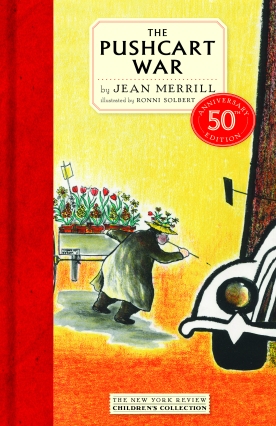
The Pushcart War: 50th Anniversary Edition 
Written by Jean Merrill
Illustrated by Ronni Solbert
The New York Review Children’s Collection 9/16/2014
978-1-59017-819-5
Age 8 to 12 230 pages
x
x
“Do you know the history of the pushcart war? The real history? It’s a story of how regular people banded together and, armed with little more than their brains and good aim, defeated a mighty foe.”
Opening
“The Pushcart War started on the afternoon of March 15, 2026, when a truck ran down a pushcart belonging to a flower peddler.”
The Story
The Pushcart War began on a normal New York City day. The streets were jammed with cars, taxis, and delivery trucks that ranged from the normal size to the mammoth trucks with tires large than your car. It was taking up to four hours to travel four city streets. Tempers are running high, especially for Mack, a truck driver, who, despite his parents being pushcart peddlers, hated pushcarts. That day, with pure intention, deliberately ran into Morris the Florist (no known relation). Thanks to Marvin Seeley’s photo of the onset of the Daffodil Massacre, we know how the war started.
 The trucks don’t want the pushcarts on the road and blamed them for the congestion. For some reason, these light, tiny, carts bothered the heavy, huge trucks. The peddlers couldn’t let the attack of Morris the Florist go unanswered, but lacked the funds the truck companies enjoyed. instead of a major affront, the peddlers decided to use pea shooters and pins to deflate the trucks tires, causing mass congestion and anger people to the point of voting trucks off city streets. For a while it worked and no one could figure out how the tires all went bad within minutes of each other. Until a mechanic found a pin.
The trucks don’t want the pushcarts on the road and blamed them for the congestion. For some reason, these light, tiny, carts bothered the heavy, huge trucks. The peddlers couldn’t let the attack of Morris the Florist go unanswered, but lacked the funds the truck companies enjoyed. instead of a major affront, the peddlers decided to use pea shooters and pins to deflate the trucks tires, causing mass congestion and anger people to the point of voting trucks off city streets. For a while it worked and no one could figure out how the tires all went bad within minutes of each other. Until a mechanic found a pin.
A single pin, or many pins does not reveal the culprit. One the newspapers ran the story, children began shooting truck tires for fun, unwittingly taking up the cause for the pushcart peddlers. Unfortunately, Frank the Flower was spotted and arrested for killing a truck tire with a pea shooter. He confessed to all 18,991 flattened tires.
“All 18,991?” asked the Police Commissioner as if he had not heard correctly the first time.
“I cannot be sure down to the last tire,” said Frank the Flower. “But I have been at it several days now.”
“But 18,991 tires!” Aid the Police Commissioner.
“It was nothing,” said Frank the Flower.
Well, kids took up the cause and to stop them the city began taxing tacks, which made the British upset since they are the world’s top producers of tacks. This got Washington involved. New York City becomes embroiled in the Pushcart War, though this name is not used yet. The Big Three Truck Companies: Leaping Lemas, Mighty Mammoths, and Tiger Trucking held a secret meeting to wipe out the pushcarts and the Pushcart King. What will happen to New York City in 2026? Will the pushcarts survive? Will the British calm down? Will Frank the Flower, who single-handedly killed 18,991 truck tires, ever leave his jail cell? What will happen to Mack, the trucker who put Morris the Florist into the hospital and started the war?
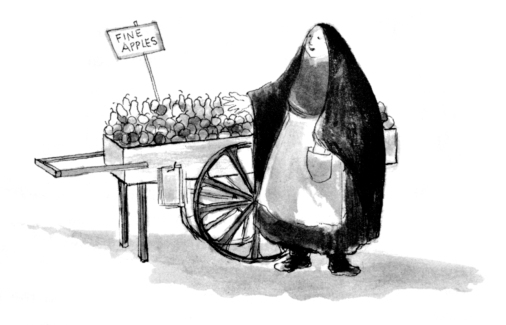 Review
Review
“The Big Three,” comprised of three delivery truck firms LEMA (Lower Eastside Moving Association) also called “Leaping Lemas,” and Tiger Trucking or “Tiger Trucks,” and Mammoth Moving, which used three sizes of trucks: Baby Mammoth, Mama Mammoth, and the Mighty Mammoth. These are the bullies of the story. For once, the bullies are not too big to fail.
The Pushcart War is a fun read. The humor is terrific and kept me groaning and laughing every few pages. The pushcart peddlers are a colorful bunch of characters especially The Pushcart King. The name to Maxie Hammerman because he fixes all of the pushcarts or builds new ones from scratch and is the only one in New York City capable of making the pushcarts correctly. When the trucking bullies decide to kidnap and dispose of The King—thinking he is the mastermind behind the campaign to rid the city streets of their trucks—Maxie has a surprise of his own. This is one of the best scenes of the story. It felt like I was reading the script from the movie called The Sting.
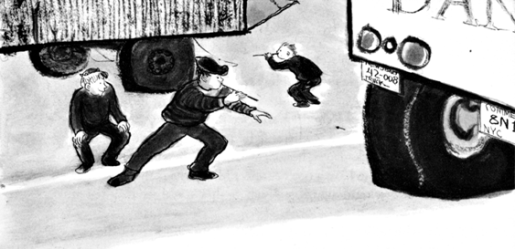
Kids will enjoy this futuristic farce of a “true tale.” The author casts herself as the futuristic novelist reporting on The Pushcart War ten years after the dust has settled and people are ready to hear about the war once more. City kids play a large part in the war, keeping the mayor and police commissioner completely puzzled. Written in 1964, the author envisions a New York City sixty years down the road. I find it interesting that there is no grand technology like cell phones and computers. The biggest difference is the extremely crowded streets, excess number of delivery trucks, and prices remaining similar, if not lower than the prices of her current time. (Apples are 5 cents).
The Pushcart War has style. The illustrations are black and white line art similar to what one would find in a newspaper only upgraded several times over. I love the illustration of Frank the Flower shooting his peashooter for the first time and Mr. Jerusalem who, after struggling over the morality of shooting truck tires, finds he is not only a terrific shot but enjoys his mission. Mr. Jerusalem quickly becomes the top tire executioner.
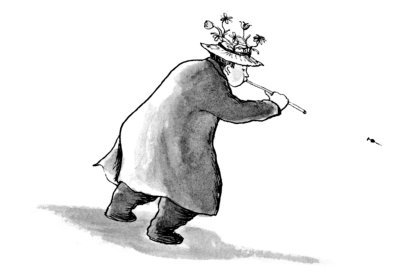 The Pushcart War is a classic tale of the big bully taking on the little guy and finding the littlest guy can outsmart, outthink, outwit the big dumb bully with grace and class. It should be required reading for every middle grade student. There is a little sociology, psychology, criminology, and a few other “ologies” worth reading. I love The Pushcart War.
The Pushcart War is a classic tale of the big bully taking on the little guy and finding the littlest guy can outsmart, outthink, outwit the big dumb bully with grace and class. It should be required reading for every middle grade student. There is a little sociology, psychology, criminology, and a few other “ologies” worth reading. I love The Pushcart War.
THE PUSHCART WAR. Text copyright © 1964/1992 by Jean Merrill. Illustrations copyright © 1964/1992 by Ronni Solbert. Reproduced by permission of the publisher, New York Review of Books, New York, NY.
x
Buy The Pushcart War at Amazon—B&N—Book Depository—New York Review of Books—your favorite bookstore.
Learn more about The Pushcart War HERE
Meet the author, Jean Merrill, from New York Times: http://www.nytimes.com/2012/08/12/books/jean-merrill-childrens-book-writer-dies-at-89.html?_r=0
Meet the illustrator, Ronni Solbert, from NYRB: http://www.nybooks.com/books/authors/ronni-solbert/
Find more classics at The New York Review Children’s Collection website: http://www.nybooks.com/books/imprints/childrens/
The New York Review Children’s Collection is an imprint of The New York Review of Books: http://www.nybooks.com/
x
Also by Jean Merrill and Ronni Solbert
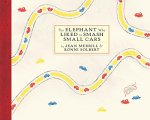
The Elephant Who Liked to Smash Small Cars
3/10/2015
x

x
Copyright © 2014 by Sue Morris/Kid Lit Reviews
Filed under:
5stars,
Favorites,
Library Donated Books,
Middle Grade Tagged:
bullies,
children's book reviews,
Jean Merrill,
middle grade novel,
mighty trucks,
New York Review of Books,
outwitting an opponent,
pushcarts,
Ronni Solbert,
standing up for what is right,
The New York Review Children’s Collection 







 .
.
Krabat and the Sorcerer’s Mill
written by Otfried Preussler
translated from German by Anthea Bell
The New York Review Children’s Collection 9/23/2014
978-1-59017-778-5
Age 9 to 13 258 pages
.
.“New Year’s has passed. Twelfth Night is almost here. Krabat, a fourteen-year-old beggar boy dressed up as one of the Three Kings, is travelling from village to village singing carols. One night he has a strange dream in which he is summoned by a faraway voice to go to a mysterious mill—and when he wakes he is irresistibly drawn there. At the mill he finds eleven other boys, all of them, like him, the apprentices of its Master, a powerful sorcerer, as Krabat soon discovers.
During the week the boys work ceaselessly grinding grain, but on Friday nights the Master initiates them into the mysteries of the ancient Art of Arts. One day, however, the sound of church bells and of a passing girl singing an Easter hymn penetrates the boys’ prison: At last they hatch a plan that will win them their freedom and put an end to the Master’s dark designs.”
Opening
“It was between New Year’s Day and Twelfth Night, and Krabat, who was fourteen at the time, had joined forces with two other Wendish beggar boys.”
The Story
Krabat has a strange dream he feels he must follow. The next day he slips away from the other two boys in his vagabond group and goes to the mill of the sorcerer. Krabat and eleven other boys work grinding grain for long days and nights. It is hard work and Krabat has a difficult time keeping up, until Tonda, the lead journeyman and Krabat’s new best friend, lightly touches Krabat while uttering a few words under his breath. Suddenly, Krabat can work as if he gained the strength of many men; the work is still laborious, yet Krabat can work with ease. Krabat has been with the mill almost one year when Tonda dies. Days later, Krabat, now three years older, becomes a full journeyman and a new boy replaces Tonda, sleeping in his bed and wearing his old clothes, just as Krabat had done one year earlier, though he did not know this until the new apprentice arrived that he slept in the bed and wore the clothes of the journeyman he replaced.
Year 2 is not much easier for Krabat. He thinks of Tonda regularly, who, in a dream, tells Krabat to trust Michal. Michal is similar to Tonda and helps Krabat when he needs help. The millwork is still long and hard, but he can easily get through it with the magic the Master teaches his little ravens in his Black School. Once a year, the boys mark each other with the sign of the Secret Brotherhood, pass under the yoke at the door, and take a blow to the check delivered by the Master, reaffirming their roles for another year.

Various Covers, pt. 1
Year 3 sees Krabat ready to leave the mill. He tries to leave three times and three times, he finds himself back in the mill. He runs to the east as far as he can run—but is still on the grounds of the mill. Krabat runs to the north—only to be at the mill. Krabat can escape but one way—death. Year three’s new apprentice is one of the friends Krabat left when called to the mill. The young boy recognizes the name Krabat, tells of having a friend by that name, but does not recognize Krabat who is now many years older than the boy is. Krabat takes his friend under his wing; much like Tonda had done for him.
Krabat cannot let go of the voice of a young singer from the village. Girls and journeymen of the Master’s mill tend to end in tragedy for at least the girl—including Tonda’s girl—and often the boy as well. Krabat knows this, yet still wants to meet this girl. She could become his savior, except no one has ever outwitted the Master. With the help of a couple of other journeymen, Krabat sets about a plan to gain not only his freedom, but also that of the other journeymen as well. This would mean the end of the mill, the end of magic, and the end of the Master. The Master has his own plan involving Krabat; an offer Krabat should find hard to resist yet does. Instead, Krabat places his life in the hands of the village girl. Can this girl pull off what no one before her could?

Various Covers, pt. 2
Review
I have never been disappointed by a New York Review Children’s Book and Krabat & the Sorcerer’s Mill is no exception. When originally written in 1971, winning many children’s book prizes, some of the German words were archaic and difficult, especially for American children. The translator replaced those words, never losing the story or its basic scheme of horror, love, and friendship between those held in bondage. It is easy to understand why Neil Gaiman calls Krabat & the Sorcerer’s Mill “one of his favorite books.”
After his dream, when Krabat is walking to the mill, each person he asks for directions or simply meets, tells him to stay far away from the mill. The villagers tell him dark, strange things occur at the mill; yet Krabat ventures on, compelled to find this it. For a beggar boy the mill must seem like Heaven. Krabat gets a warm bed and filling meals that do not scrimp on meat. No more singing for his supper and traveling on foot from village to village is indeed a blessing. But the work grinding grain from dusk to dawn is laborious and leaves Krabat exhausted. Then an older boy, Tonda, steps up to help Krabat. Krabat must keep Tonda’s help secret, as the Master would not be pleased his new apprentice received assistance.
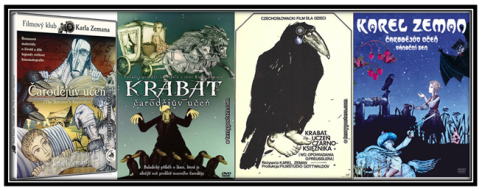
Movie Posters
The Master is unsympathetic, mysterious, and dangerous. He has secrets of his own. With only one eye, the Master seems to be able to see everything, regardless of where it might occur. Many times, he follows Krabat into town, showing up as a one-eyed raven, or a one-eyed horse, and even a one-eyed woman, all with a black patch over the useless eye—that he cannot disguise. Krabat sees these creatures but never makes the complete connection as to it being the Master.
Krabat & the Sorcerer’s Mill will delight kids who like adventures, mysteries, and magic. Though the Master deals in the black arts, there is nothing in the story that will scare anyone. At times, the writing feels long, and at times, it is long, yet never arduous or out of place. Preussler spins a tale so complete one wonders if such goings on really occurred in seventeenth-century Germany. Krabat & the Sorcerer’s Mill will keep kids entranced as they read this gothic tale of orphaned boys finding a home with a dangerous wizard. I enjoyed every word of this captivating story. Krabat & the Sorcerer’s Mill tends to be best for the advanced reader. Adults will also immensely enjoy this alluring tale.
KRABAT & THE SORCERER’S MILL. Text copyright © 1971 by Otfried Preussler. Copyright © 1981 by Thienemann Verlag. Translatation copyright © 1972 by Anthea Bell. Published in 2014 by the New York Review of Books.
.
Purchase Krabat & the Sorcerer’s Mill at Amazon —B&N—Book Depository—New York Review of Books—at your favorite bookstore.
—B&N—Book Depository—New York Review of Books—at your favorite bookstore.
Learn more about Krabat & the Sorcerer’s Mill HERE.
Meet the author, Otfried Preussler, at his website: http://www.preussler.de/
Meet the translator, Anthea Bell, bio wiki: http://en.wikipedia.org/wiki/Anthea_Bell
Find other classic children’s books at the New York Review Children’s Collection website: http://www.nybooks.com/books/imprints/childrens/
New York Review Children’s Collection is an imprint of the New York Review of Books. http://www.nybooks.com/
Originally published in 1972, under the title The Satanic Mill.
.
Also by Otfried Preussler, (soon to be published by NYRB)
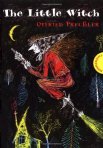
The Little Witch

The Robber Hotzenplotz
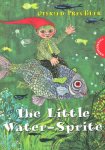
The Little Water Sprite
Also Translated by Anthea Bell
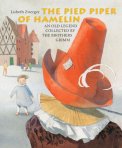
Pied Piper of Hamelin

Inkheart (Inkheart Trilogy)
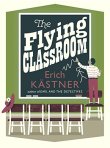
The Flying Classroom (Pushkin Children’s Collection) 3/10/2015
m
m
m
m
m
m
m
m
m

m
m
copyright © 2014 by Sue Morris/Kid Lit Reviews
Filed under:
5stars,
Children's Books,
Favorites,
Library Donated Books,
Middle Grade Tagged:
Anthea Bell,
children's book reviews,
classic tale,
journeyman,
Krabat & the Sorcerer’s Mill,
magic,
middle grade book,
New York Review of Books,
Otfried Preussler,
ravens,
The New York Review Children’s Collection,
wizards 








 The trucks don’t want the pushcarts on the road and blamed them for the congestion. For some reason, these light, tiny, carts bothered the heavy, huge trucks. The peddlers couldn’t let the attack of Morris the Florist go unanswered, but lacked the funds the truck companies enjoyed. instead of a major affront, the peddlers decided to use pea shooters and pins to deflate the trucks tires, causing mass congestion and anger people to the point of voting trucks off city streets. For a while it worked and no one could figure out how the tires all went bad within minutes of each other. Until a mechanic found a pin.
The trucks don’t want the pushcarts on the road and blamed them for the congestion. For some reason, these light, tiny, carts bothered the heavy, huge trucks. The peddlers couldn’t let the attack of Morris the Florist go unanswered, but lacked the funds the truck companies enjoyed. instead of a major affront, the peddlers decided to use pea shooters and pins to deflate the trucks tires, causing mass congestion and anger people to the point of voting trucks off city streets. For a while it worked and no one could figure out how the tires all went bad within minutes of each other. Until a mechanic found a pin. The Pushcart War is a classic tale of the big bully taking on the little guy and finding the littlest guy can outsmart, outthink, outwit the big dumb bully with grace and class. It should be required reading for every middle grade student. There is a little sociology, psychology, criminology, and a few other “ologies” worth reading. I love The Pushcart War.
The Pushcart War is a classic tale of the big bully taking on the little guy and finding the littlest guy can outsmart, outthink, outwit the big dumb bully with grace and class. It should be required reading for every middle grade student. There is a little sociology, psychology, criminology, and a few other “ologies” worth reading. I love The Pushcart War.















